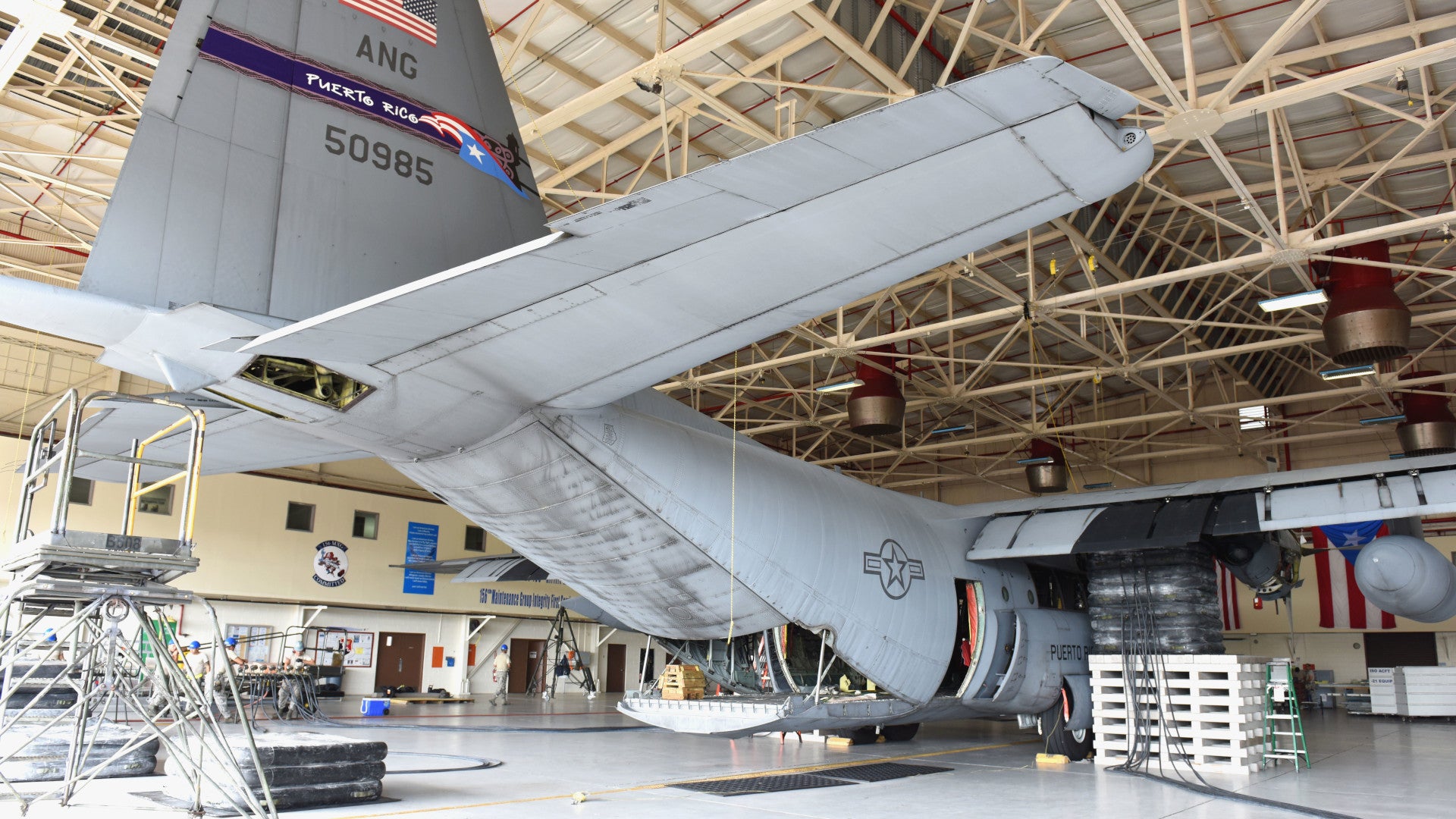The Puerto Rico Air National Guard, or PRANG, has lost its flying mission less than two years after Hurricane Maria battered its main base and nearly a year after tragic accident exposed a culture of apathy and poor morale. It will now reorganize its former flying units to support the U.S. Air Force’s recent push to revitalize its ability to rapidly deploy and establish forward bases overseas during major crises and conflicts.
U.S. Air Force General Joseph L. Lengyel, the chief of the National Guard Bureau, informed Puerto Rico Governor Ricardo Rosselló of the decision on Apr. 11, 2019. Puerto Rico Air National Guard’s 156th Airlift Wing had formally received a new name, simply 156th Wing, the day before to mark the shift, which will take approximately 36 months to complete. When it reaches full operational capability, the wing will have gained 18 personnel in the process transitioning from flying the WC-130H Hercules “Hurricane Hunter” aircraft converted into airlifters to its new contingency response and combat communications missions.
“The Air Force and the Air National Guard are capitalizing on the expertise of PRANG Airmen and Puerto Rico’s strategic location to support federal and territorial mission requests,” U.S. Air Force Lieutenant General L. Scott Rice, director of the Air National Guard, said in a statement. “The [contingency response and combat communications] missions also provide Puerto Rico’s territorial leadership tremendous resources for territorial emergency response.”
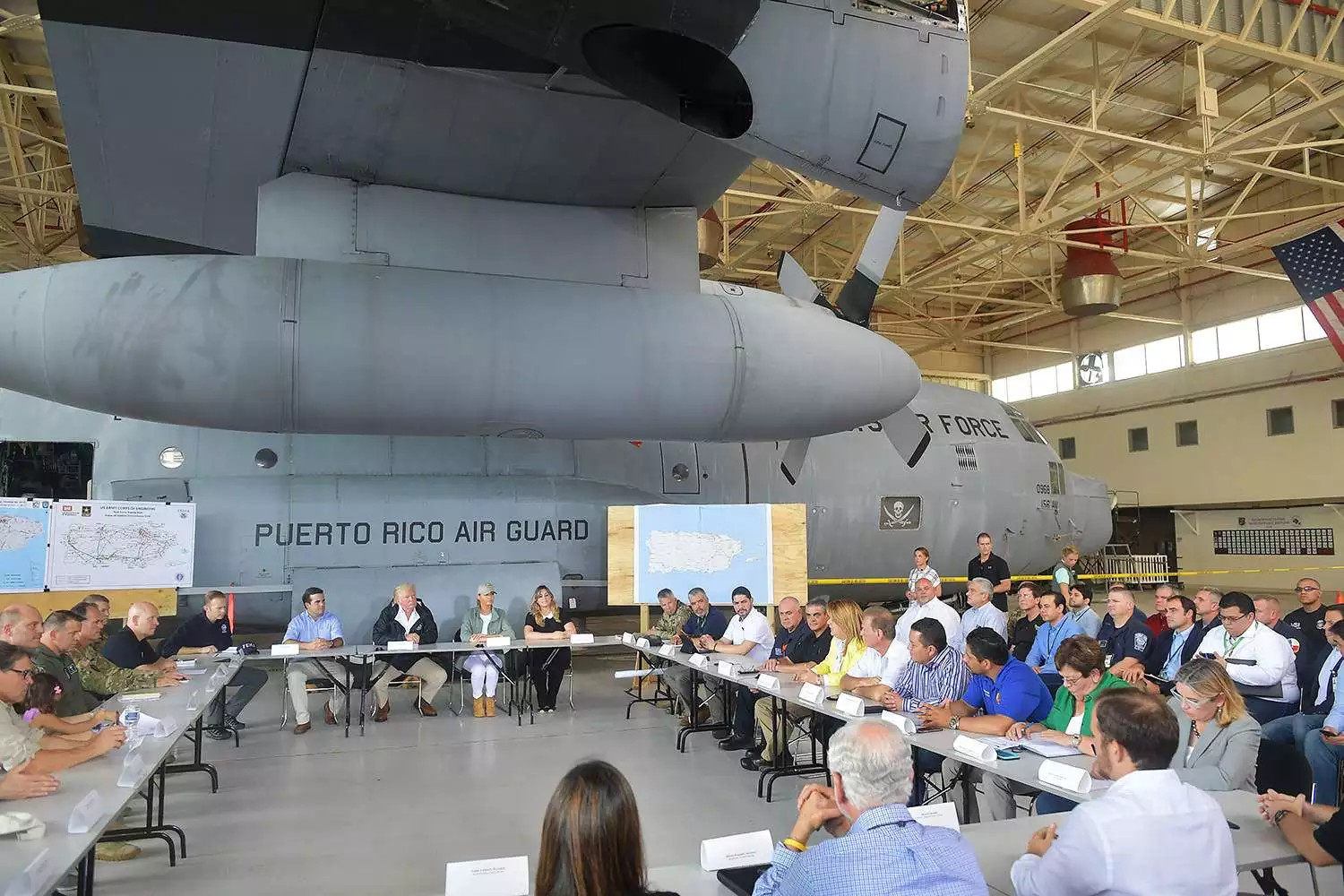
This will be the first time since the Wing first stood up at the 156th Tactical Fighter Group in 1962 that it has not had a flying mission of some kind. The PRANG does not have any other flying squadrons outside of the Wing. This also means Puerto Rico will no longer have any U.S. military fixed-wing aircraft permanently based on the island for the first time in decades.
The National Guard Bureau says that the new 156th Wing will be the first unit within the Air National Guard to combine contingency response and combat communications missions together. There are two other contingency response elements in the Guard, most notably Kentucky’s 123rd Contingency Response Group, but these are attached to larger flying units. There are combat communications squadrons in numerous states and territories, but not specifically paired with contingency response elements.
The two missions are distinctly related, though. Contingency response units, sometimes referred to as an “airbase in a box,” are structured to provide the personnel and resources necessary to rapidly establish air operations at forward locations. Combat communications elements are tasked operating and maintaining communications and data-sharing networks both in and around their home station and, if required, while forward deployed.
The Air Force as a whole, to include its Reserve and National Guard elements, has become increasingly concerned about the ability to rapidly deploy and begin conducting operations during a high-end conflict. The service has warned that it may not be well suited to moving into a theater of operations under fire from a major opponent and establishing bases of operation, especially if any existing infrastructure is damaged, destroyed, or otherwise unusable.
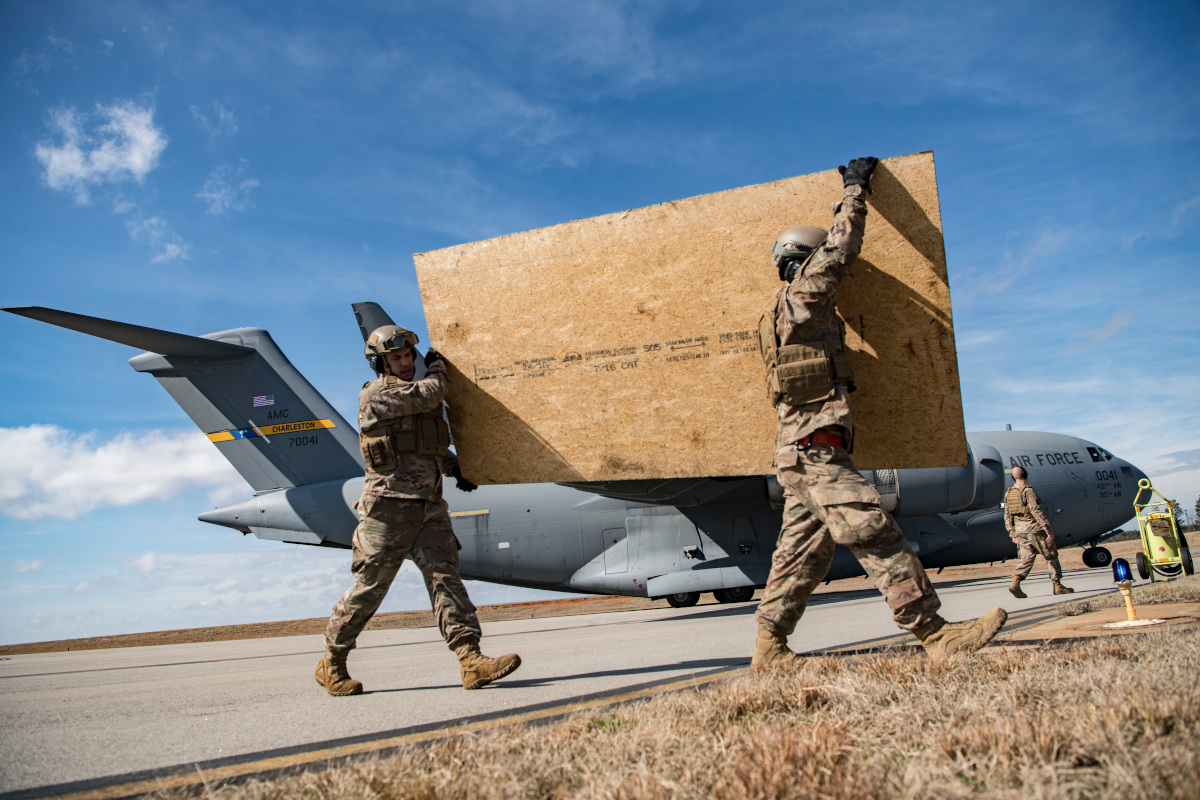
There is now a significant emphasis within the Air Force about revitalizing its contingency response and other related capabilities, including expeditionary base defense, civil engineering, explosive ordnance disposal, and more. You can read about these issues and what the Air Force is already doing to mitigate them in much greater detail here.
Separately, the ongoing crisis in Venezuela has helped underscore Puerto Rico’s strategic position as a potential staging base for operations in the Caribbean, Central American, and South America. Of course, there remains no hard evidence at present that the U.S. military is actively preparing for an intervention to unseat Venezuelan President Nicolas Maduro.
In addition, as Lieutenant General Rice noted, the contingency response capabilities have significant value outside of war zones, as well. Contingency response units can just as readily open up airports and other facilities in the aftermath of natural disasters and in order to provide aid during humanitarian crises. Among other things, hurricanes regularly come crashing through the Caribbean and the revised 156th Wing would be well positioned to help respond. Air Force combat controllers and other contingency response personnel have taken part in humanitarian relief missions in the region over the years, including multiple trips to Haiti, in particular.
This applies to crises inside the United States, as well. Specialized Air Force units, as well as those from other services, were instrumental in reopening Tyndall Air Force Base in Florida after Hurricane Michael struck in October 2018. Similar elements are now on the scene at Offutt Air Force Base in Nebraska in the aftermath of historic flooding at that immensely strategic facility.
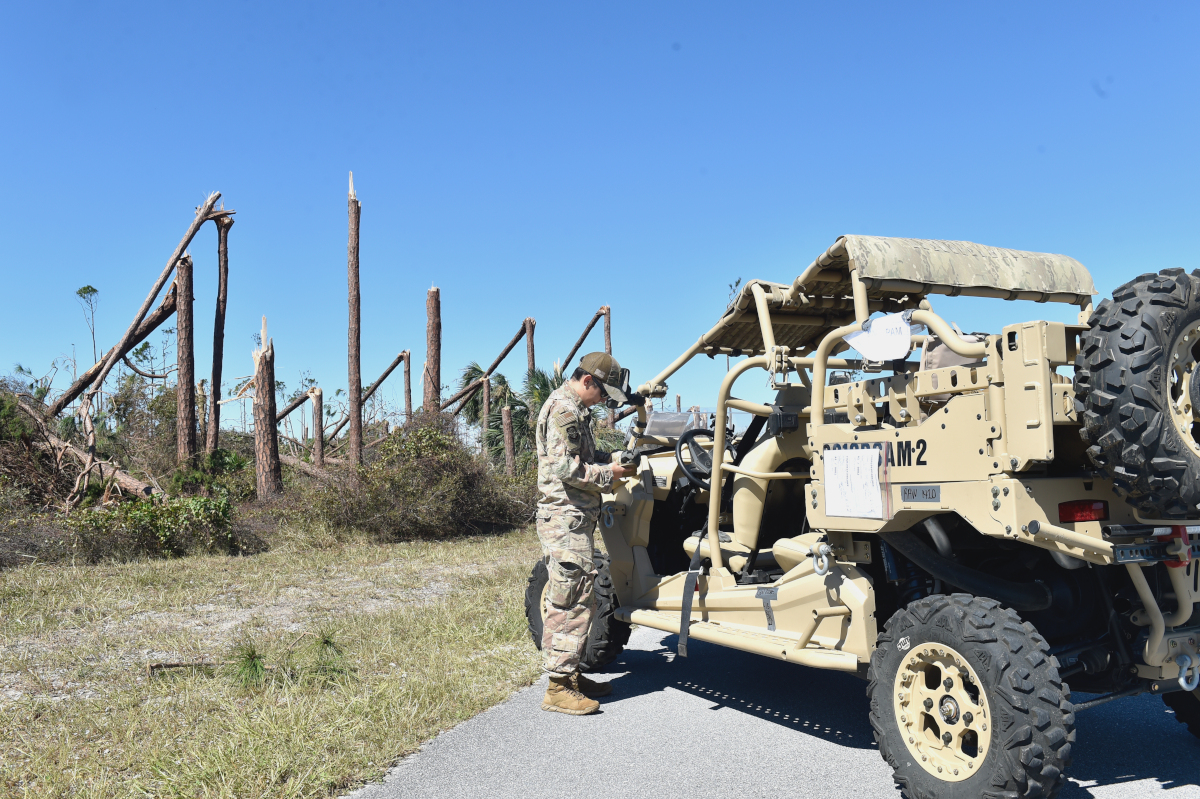
Puerto Rico itself is still very much recovering from the devastation that Hurricane Maria wrought on the island in 2017. The island’s National Guard units have been significant contributors in the disaster relief efforts. It is worth noting, of course, that an airlift unit with C-130s, a design capable of rough field operation in austere environments, would also be immensely valuable in any sort of post-disaster situation and this a capability the PRANG has now lost for the foreseeable future.
But at the same time, Hurricane Maria and the political battle over the Federal Governments still-ongoing response to that disaster clearly played a significant role in the National Guard Bureau’s decision to strip the PRANG of its flying mission. As of April 2018, the plan was still for the 156th to continue with its airlift mission using newer C-130H2 Hercules, according to an Air Force report.
The readiness and general capability of the 156th Airlift Wing had already been in decline for years, too. In 1998, what was then known as the 156th Fighter Wing traded its F-16A/B fighter jets for C-130E Hercules cargo aircraft, becoming the 156th Airlift Wing in the process. The first E model Hercules entered service in the early 1960s and by the early 2000s they had become increasingly hard to maintain.
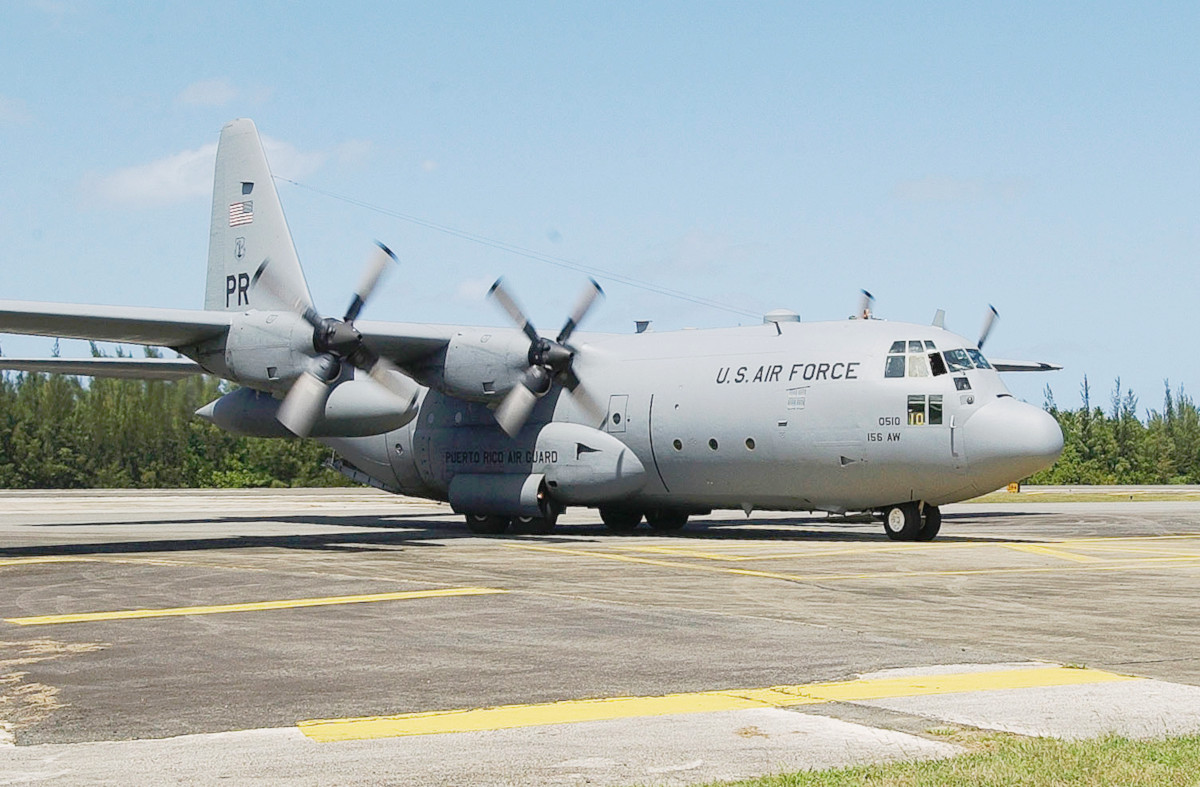
When the 156th retired the C-130Es in 2012, it was one of the last units still operating the type. To keep it flying, the Air Force shifted six WC-130Hs to the unit from the Tennessee Air National Guard. The problem here was that these aircraft were configured primarily as Hurricane Hunters, a mission you can read about in more detail here, and were not combat coded.
The 156th never assumed a Hurricane Hunting mission, despite having these aircraft. Since they weren’t combat coded, the planes had also not received a variety of upgrades added to regular C-130H airlifters over the years. So, though the WC-130Hs arrived stripped of their weather reconnaissance equipment and configured for the cargo carrying mission, these planes were never capable of fully performing the wing’s main airlift job.
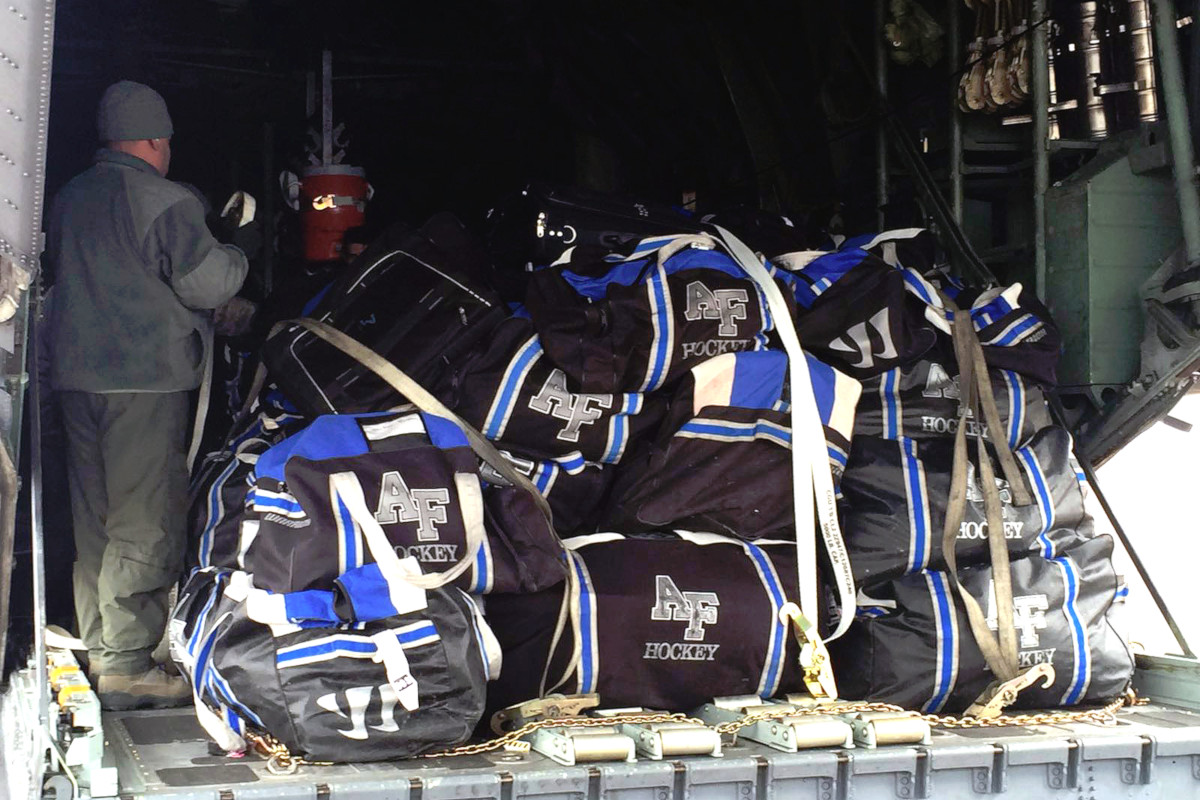
A plan in 2016 to convert the 156th to an intelligence, surveillance, and reconnaissance unit flying the RC-26B Condor, a plane you can read more about in detail here, collapsed. The following year, Hurricane Maria struck the island, dealing significant damage Muñiz Air National Guard Base.
The facilities at Muñiz were already old and neglected to begin with, which only further reduced the unit’s readiness and continued to fuel a growing culture of apathy. This all came to a head on May 2, 2018, when one of the 156th’s WC-130Hs crashed near Savannah/Hilton Head International Airport in Georgia, killing all nine individuals on board.
The Air Force’s subsequent investigation determined that the crash was the result of problems with one of the engines followed by a series of human errors that led to a stall and a loss of control that sent the plane plummeting into Georgia State Highway 21. In addition, the report slammed the 156th for lax maintenance practices and what it described as “good enough” attitude.
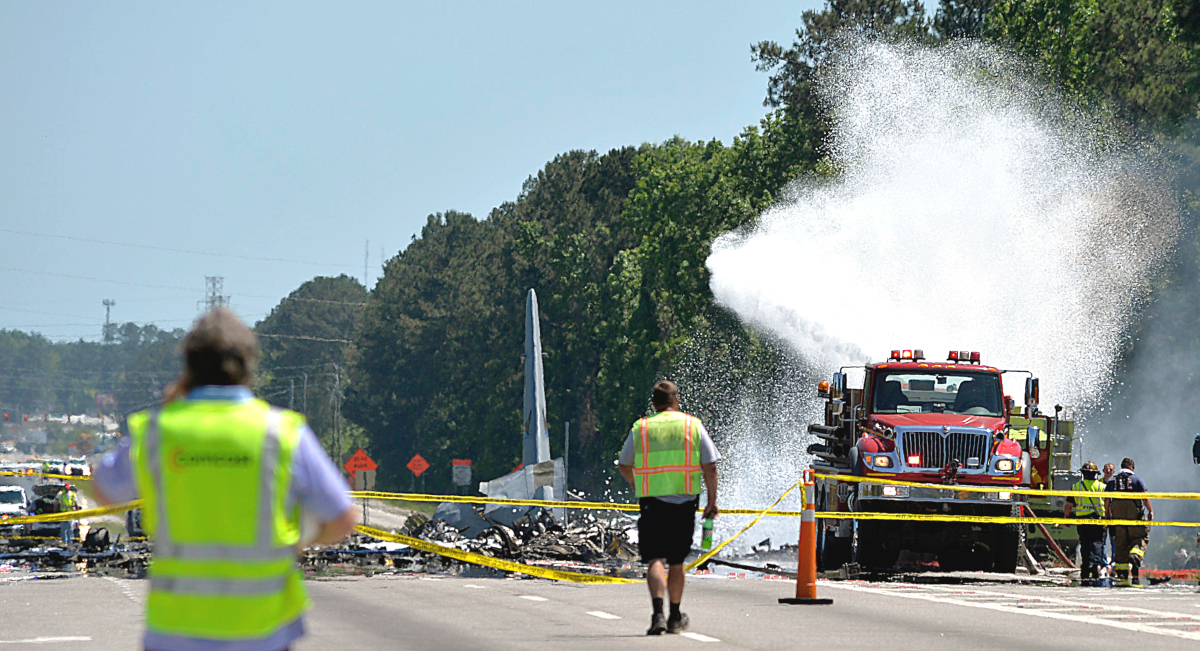
But the review also shone a light on the apathy and poor morale of a unit that officially had a combat mission, but had no combat-coded aircraft, and was making do with inadequate facilities, chronic logistical problems, and the aftermath of Maria. The WC-130H that crashed was heading to retirement at the Bone Yard at Davis-Monthan Air Force Base in Arizona and was one of the oldest Hercules of any kind still in service at the time.
“Airmen have no direct connection to a Mission other than maintaining current and qualified aircrews,” the Air Force’s investigators noted. “Rather than being a source of pride and excellence, the concept of a Citizen Airman was twisted into an excuse of, ‘I am just a TR’ (Traditional Reservist).”
The accident seemed to have finally ended the Wing’s prospects for a continued flying mission, at least for the immediate future, capping off decades of decline and neglect. Hopefully, with a new, clear mission, the 156th will now be able to regain its footing in the coming years.
But at the same time, the loss of organic airlift capability of any kind for the U.S. Territory is another crushing blow in a long line of hits the Island has taken during and after Maria tore through almost 20 months ago.
Contact the author: jtrevithickpr@gmail.com
